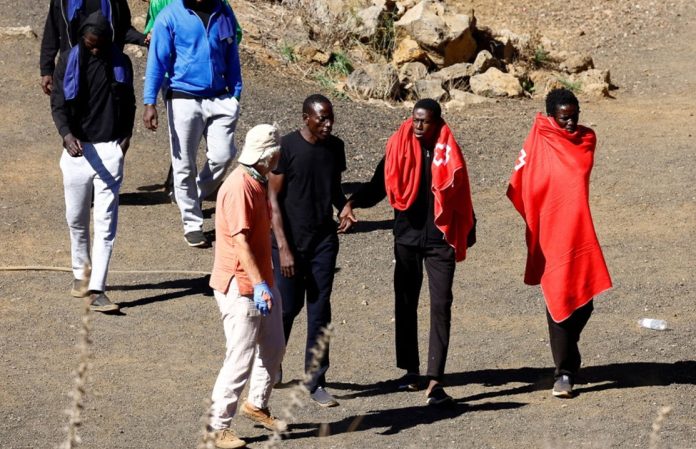European countries will discuss on Thursday “innovative” ways to increase deportations of irregular migrants and rejected asylum seekers, including controversial plans to set up special return centres in non-EU countries.
The rise of nationally-oriented parties in several European countries has helped put migration issues at the centre of the attention of the interior ministers of the 27-nation bloc, who are meeting in Luxembourg ahead of a meeting of EU leaders later this month.
Whether the bloc should explore “the feasibility of innovative solutions for the return of migrants, in particular the concept of return centres” will be discussed at the ministers working lunch, according to a background note to the official agenda.
The meeting comes just months after the EU adopted a sweeping reform of its asylum policy.
The long-discussed package, which will come into force in June 2026, tightens border procedures and requires countries to accept asylum seekers from “frontline” states such as Italy or Greece or provide money and resources. But more than half of EU member states said it doesn’t go far enough.
In May, 15 of them urged the European Commission to “think outside the box” by calling for the creation of centres outside the EU where rejected asylum seekers could be sent while awaiting deportation – a plan to be discussed on Thursday. Jacob Kirkegaard, an analyst at Bruegel, a Brussels-based think tank, told AFP:
Pressure is on accelerating deportations.
A growing number of governments are keen to show they are trying to “get rejected migrants off the streets one way or another,” he also added.
Centres for migrants
There are no detailed plans yet for how the return centres might work in practice. A diplomatic source said one option would be to ask EU candidates, over whom the bloc has some leverage to ensure acceptable standards, to host such centres. But sending migrants to third countries is fraught with ethical and legal issues, which could prevent the idea from becoming a reality.
Another diplomatic source warned that legal due diligence and an assessment of basic human rights would be needed to test the feasibility of any such project.
Last year, less than 20 per cent of the nearly 500,000 people ordered to leave the bloc were returned to their country of origin, according to Eurostat, the EU’s statistical office. Repatriation is notoriously difficult – it is costly and requires the co-operation of the countries to which the migrants need to return.
According to border agency Frontex, the top three migrants who crossed the EU border illegally this year include Syria, Mali and Afghanistan – countries with which Brussels has no or at best difficult relations.
In addition to return centres, Austria and the Netherlands have proposed legislative changes that would punish asylum seekers who are ordered to leave the country but fail to do so, which experts say could open the door to detentions.
“Hotspots” outside the EU
Hungarian Prime Minister Viktor Orbán, who currently holds the presidency of the EU Council, advocated the creation of “hotspots” outside the EU to process asylum claims and called for a regular “Schengen summit” to discuss border control issues. Hungary’s PM also reiterated his country’s request to opt out of EU migration policy – an approach the Dutch government is now considering.
Some point to Italy’s deal with Albania to hold and process migrants in that country as a possible way forward. But other agreements the EU has made with Tunisia, Libya and other countries, providing aid and investment in exchange for help in deterring the arrival of migrants, have proved highly controversial and faced legal challenges for subjecting migrants to abuse.
Just last week, two non-governmental organisations filed a lawsuit against Frontex, claiming that the support it provided to the Libyan coastguard to detect boats carrying migrants violated EU rules.
Numbers are down, but that means nothing
Frontex claims that unauthorised border crossings from the south have fallen by 39 per cent in 2024 compared to 2023.
The route from North Africa through the central Mediterranean to Italy is the most commonly used by migrants, but 65 per cent fewer people used it this year than in 2023. However, the figures for individual routes do not show a decline in all cases.
The second most popular route is the eastern Mediterranean, where migrants arrive in Greece. Arrivals have increased by 57 per cent in the first eight months of this year, with trafficking networks using speedboats and other aggressive methods to thwart the coastguard.
This is despite the supposed success of a declaration between the EU and Turkey signed in 2016 that was supposed to stem the flow of irregular migrants from Turkey to the EU.
The Atlantic route from West Africa to the Canary Islands is the third most popular and has more than doubled this year. More than 25,500 migrants from countries such as Mali and Senegal landed here at the end of August, according to the United Nations.
